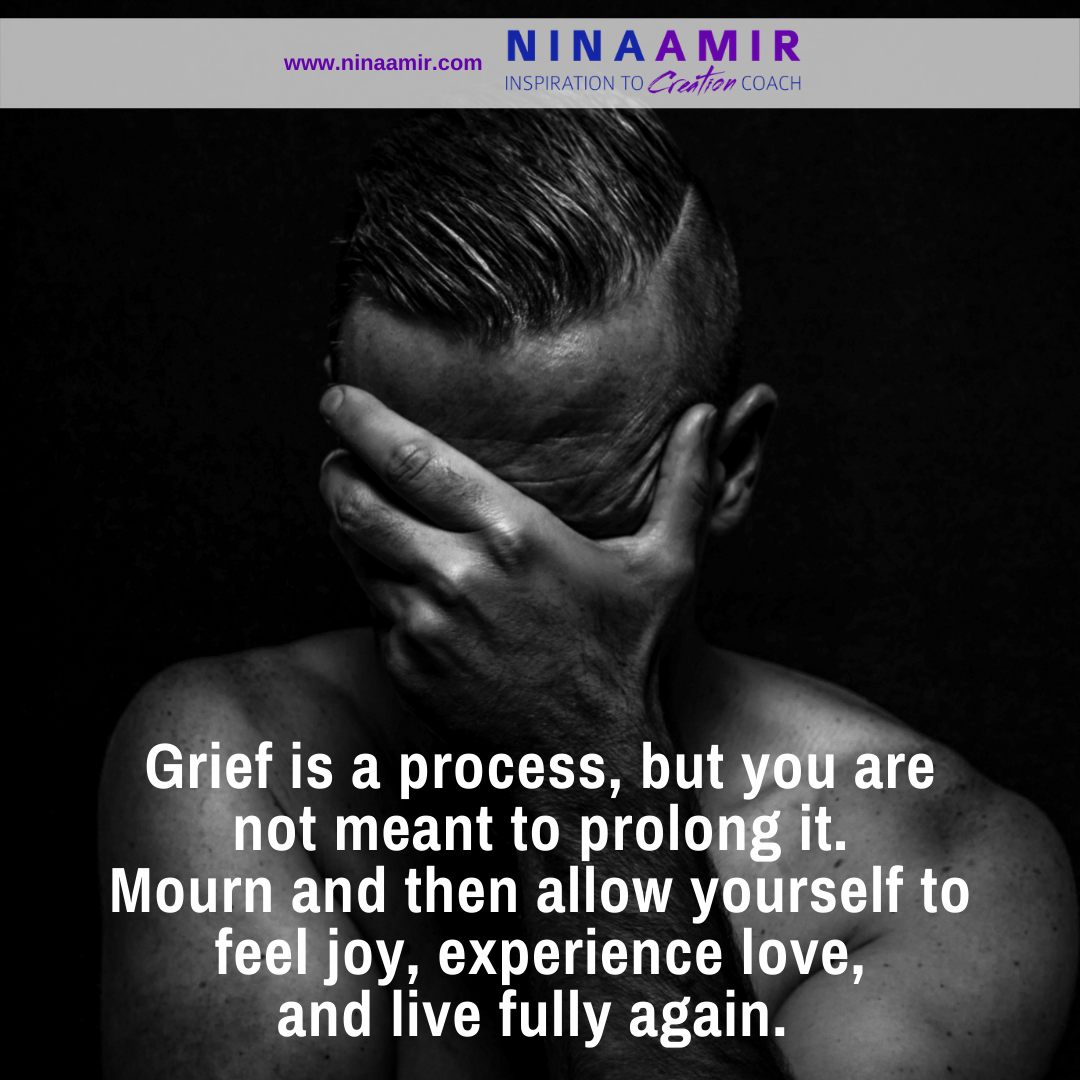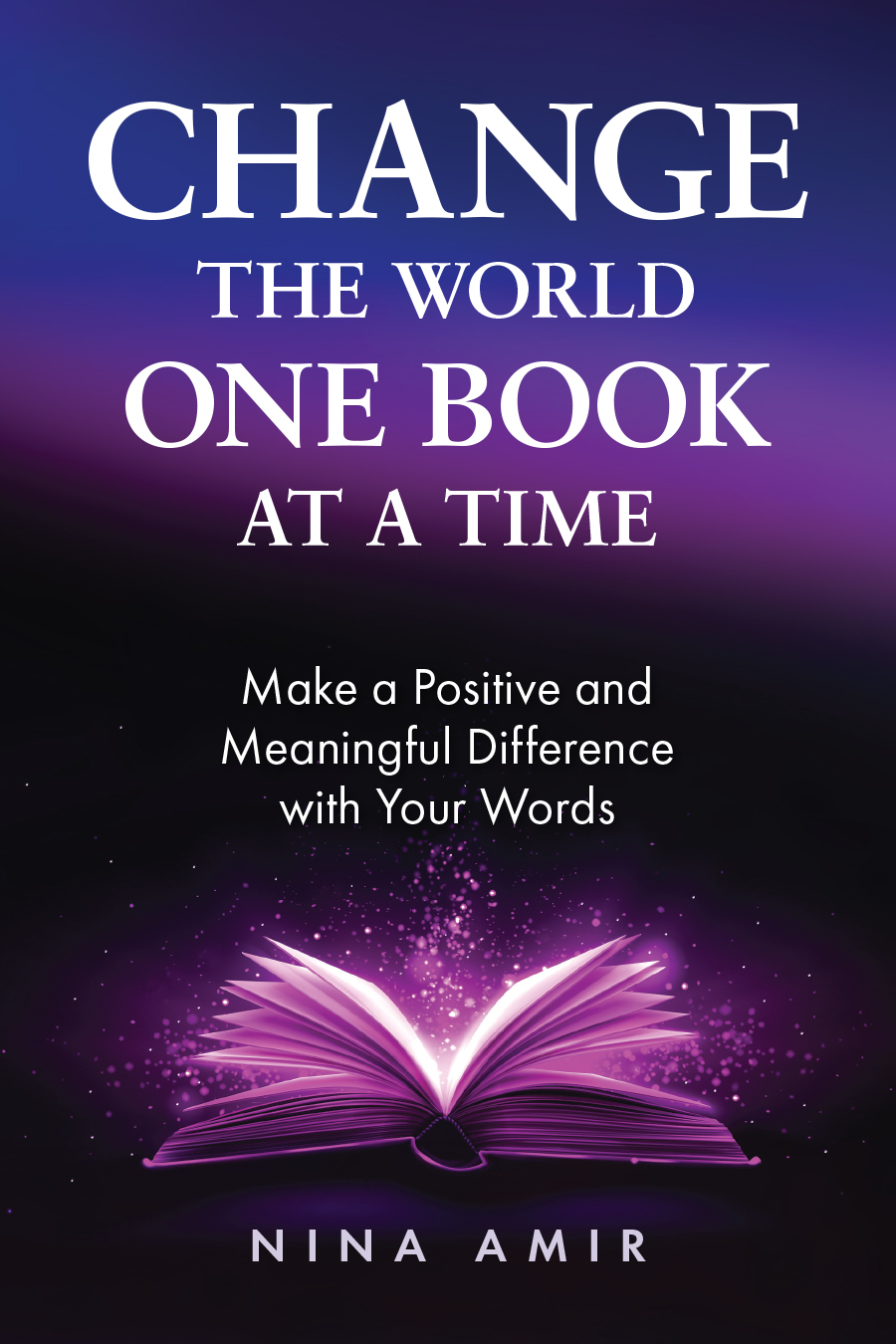 When I sat down to write this post, COVID-19 had taken the lives of two million people worldwide. The families of those two million people have also experienced a loved one’s death and the grief that follows.
When I sat down to write this post, COVID-19 had taken the lives of two million people worldwide. The families of those two million people have also experienced a loved one’s death and the grief that follows.
For some, grief is a dull nagging pain that never seems to lessen no matter how much time passes. For others, it’s is an unbearable physical and emotional experience, especially since it may be accompanied by regret. This is especially true during this pandemic since many people have not been able to speak with, say goodbye to, or comfort their friends or family members before they transitioned.
So, how do you deal with death and the subsequent grief?
I’m no expert, that’s for sure. In fact, I’m writing this post as much for myself as I am for you, my dear reader. My 96-year-old mother is on hospice. I know there will be a day all-too-soon when she transitions, and I will feel both sadness and regret that I could not see her or hold her hand at the end.
Damn pandemic.
I’m anticipating grief. I’m thinking about how best to move through the mourning period rather than dwell in it for an extended time but still allow myself to fully grieve. And so, I thought I’d share my thoughts with the hope they might support someone else anticipating or going through the grief process.
What is grief?
According to HelpGuide.com, “Grief is a natural response to loss. It’s the emotional suffering you feel when something or someone you love is taken away. Often, the pain of loss can feel overwhelming. You may experience all kinds of difficult and unexpected emotions, from shock or anger to disbelief, guilt, and profound sadness. The pain of grief can also disrupt your physical health, making it difficult to sleep, eat, or even think straight. These are normal reactions to loss—and the more significant the loss, the more intense your grief will be.”
If you are grief-stricken, you may seek ways to cope with the pain, come to terms with your emotions, and pick up the pieces. It’s important not to remain stuck in grief…at least not for too long.
How long is too long? You will know…or your friends and family members will voice concern.
Too short a mourning period also can become problematic. If you don’t give yourself enough time to grieve, you may feel the ramifications later. Your sadness will come out sideways as anger, depression, overeating, alcoholism, or other unsupportive behaviors and reactions.
Standard Advice for Dealing with Grief
The standard advice given to those experiencing grief is to:
- Acknowledge your pain.
- Accept that grief can trigger different and unexpected emotions.
- Understand that your grieving process is unique.
- Seek out support from friends and family—or a mental health professional, if needed.
- Taking care of yourself physically.
- Recognize the difference between grief and depression.
All six suggestions are good ones. However, when you are grief-stricken, it can be difficult to remember these things. If you have been mourning a loss and found yourself here, good for you! You are on the way to healing.
Passing through the Stages of Grief
It’s also important to know that grief has stages. In 1969, psychiatrist Elisabeth Kübler-Ross introduced what has become known as the “five stages of grief.” They are:
- Denial: “This can’t be happening to me.”
- Anger: “Why is this happening? Who is to blame?”
- Bargaining: “Make this not happen, and in return, I will ____.”
- Depression: “I’m too sad to do anything.”
- Acceptance: “I’m at peace with what happened.”
Know that you will likely go through these stages—or are going through them now. It’s natural to have such thoughts and corresponding emotions. Also, know that you will heal. Like all processes, moving through the stages takes time, though.
That said, not everyone goes through all the stages of grief. Some don’t go through any of them at all! Yet others don’t go through them in sequential order.
There is no “should” to grief. Nor is there a typical way of moving through the grieving process.
The Mourning Period
After someone dies, you experience a period of mourning. Each person has a different time frame for when the mourning period ends.
When someone dies, I am always reminded of the Jewish tradition of “sitting shiva.” This ritual provides a recommended time period for spiritual and emotional healing and provides an endpoint for active mourning.
According to Shiva.com, shiva is the traditional seven-day mourning period following the burial. During this time, mourners stay at home and receive guests to offer them comfort. After that week, the mourner returns to work or normal daily activities.
Shiva is followed by sheloshim, a 30-day mourning period after the burial that includes the first seven days of shiva. This time allows the mourners to get over the shock of the death. When mourning a parent, the sheloshim period is extended to a year.
I mention these Jewish traditions because they are kind. They allow for the grieving process. They also are firm. They don’t let a person wallow in grief beyond a “normal” period. Also, without this delineation between being “in active mourning” and moving on with life, it’s easy to get stuck in grief.
I believe you must give yourself time to heal after the death of a loved one. How long? Again… it’s different for everyone. But you also have to return to life as you knew it before the death—or as it is now—at some point. Otherwise, you put your emotional, mental, and physical health in jeopardy.
Rely on Your Faith
For many people, faith helps them through go through the grief process. No matter your religious affiliation, if you are a spiritual person, belief in God can lead to acceptance and healing.
Maybe you trust that God’s hand is in all events. Or perhaps you believe life and death are preordained or a person’s destiny. You might believe in heaven or reincarnation. Whatever your belief, that understanding of life and death may make it easier to move through the grief process.
Often, prayer provides comfort. The same can be said of religious rituals, such as wakes, funerals, and sitting shiva.
Life After Death
While we all miss the physical presence of the loved one who has died, it is possible to take comfort in the fact that the soul lives on. I believe that death releases the soul from the spiritual body, and those who transition from the physical plane can stay in communication with us. As such, we can remain “connected” to our loved ones after their death.
Knowing this gives me great comfort even now. If you don’t share this belief, consider the following stories.
One of my best friends died many years ago. My father died when I was seven years. Both of them have spoken to me through a medium. A medium can channel the spirit or soul of the deceased. I know what the medium shared came from my friend and father based on what and how they shared information and messages.
My daughter had a vivid dream about her best friend on the night he committed suicide. It was clear that he reached out to her from “the other side” to help him transition. She had no idea he was dead until the next day.
My neighbor began to journal the words of her husband after he died. He comforted her and reassured her that it was okay to move on with her life.
A friend has regular “conversations” with a mutual friend who died recently. He shares with her lessons that only one who has passed through the veil would be able to teach.
As my mother approaches her last days, I’ve reached out to her energetically. I know that once she is gone, I can speak to her this way as well.
If the essential aspect of a person—the soul— lives on after death, your relationship with the person changes, but you don’t lose your connection with them.
Don’t Stuff Your Emotions
No matter your beliefs, I think one of the most important things to do when grieving is to allow yourself to fully feel your emotions. I know that’s hard for a lot of people…including myself.
My grieving process has begun even though my mother is still alive. Knowing she is dying has started the process. That’s true for anyone who has a friend or family member dying of COVID-19 in an ICU right now or who has had a loved one die of a prolonged illness.
I find myself doing everything I can to avoid getting upset. I try to compartmentalize what’s going on with my mother, so I can work and handle everyday life responsibilities. But avoiding feelings is not healthy. So, I remind myself that it is okay…more than okay…to cry and feel sad.
I know I will have to give myself a few days…a week…a month to really feel…really…deeply…my grief. After that, I know I will need to allow the emotions to come up…and out…at various times in the future. If I “stuff” my emotions, I’ll end up sick, depressed, or worse.
I’ll also have to keep moving forward and taking care of responsibilities…maybe not the first week after her death but soon thereafter.
Give Yourself Permission
Here’s what else I know: Even though I know my mother’s death is imminent, there is no way to prepare for the moment when she transitions. I have no idea how I will react.
But I can give myself permission to mourn and do whatever I feel necessary to take care of myself. The greatest gift you and I can give ourselves is the permission to grieve.
Memories are Blessings
And know this: Every memory you have of your loved one blesses you…and, on another level, blesses their soul. Allow that to bring you comfort and peace.
There’s a healing that happens when we recount stories about those who have passed. That’s why we do so at a memorial service. We remember the deceased with tenderness and fondness. And the memories allow us to feel both the joy of the relationship and the sadness that comes with knowing the relationship cannot continue on the physical plane.
Joy and Grief can Walk Hand in Hand
It’s possible to feel both joy and grief—not at the same time but in quick succession. These emotions walk comfortably hand in hand.
Recently, one of my best friends unexpectedly lost her husband. She is the most joyous person I know. Not long after his death, I saw a photo of her with her grandchild. She was smiling and looked happy.
In fact, she was happy at that moment.
Over the holidays, she spent time with family playing games and laughing. She was happy in those moments, too.
But she admits that she also feels sad a lot of the time.
You do not show respect for someone who has died by being sad for a prolonged period. Nor do you need to keep someone’s memory alive by being profoundly unhappy.
Consider what your dead loved one would want for you. He or she would like you to be happy and go on living.
Be Easy with the Process
More than everything else I’ve written here, there is one piece of advice I’d like to share (and that I will give to myself, too). Be kind to yourself.
Don’t condemn yourself for feeling sad or crying. Don’t berate yourself for finding it challenging to do daily tasks. Allow yourself to stay in bed if you think you must or to opt-out of commitments for a time.
Be easy with the process of grief.
Find comfort in the fact that you had the supreme gift of knowing your loved one—for however long a time. In fact, the more love you experienced in that relationship, the greater will be your pain.
But don’t focus on the pain. Instead, celebrate the love you shared—and still share. Transform your pain into gratitude since it is a reminder of that love.
You are stronger than you know. You can and will find ways to deal with death and grief. You will heal and feel happy again. You will find a way to live fully.
And know that you are not alone.
How have you helped yourself move through the grief process and heal? Share in a comment so others can learn and heal. And please pass this post along to someone who will find it helpful.
Never miss one of my videos! Click here to subscribe to my YouTube channel.
 Ready to get your life back on track? Give me 90 minutes of your time, and I’ll help you discover the inspired next steps that will help you achieve the personal and spiritual growth you desire. Apply for a FREE Certified High Performance Coaching breakthrough strategy session. Fill out this application.
Ready to get your life back on track? Give me 90 minutes of your time, and I’ll help you discover the inspired next steps that will help you achieve the personal and spiritual growth you desire. Apply for a FREE Certified High Performance Coaching breakthrough strategy session. Fill out this application.
Or, if you prefer a spiritual and personal growth program (and group coaching), click here to become a Founding Member of the Inspired Creator Community. Get a world-class Certified High Performance Coaching program, Inspired Results Coaching, and strategies for living a life that feeds your soul.
Photo courtesy of Scott Evans.



Thank you, Nina, for your post. It is well worth reading and incorporating in the healing process after any loss.
Thank you, Janet. Your comment means a lot to me.